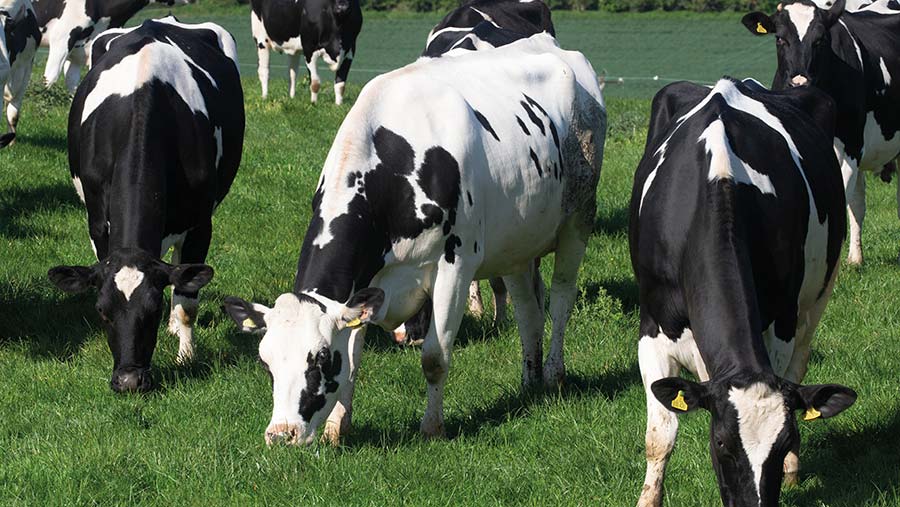Dairy farmers urged to revise budgets as milk prices fall
 © Tim Scrivener
© Tim Scrivener A serious farm budget review should be undertaken to determine breakeven points this spring by farmers facing falling milk prices and fluctuating cost bases.
This is the message from dairy consultant Tony Evans of Andersons, who is reviewing budgets in detail for his own dairy business and advising clients to do the same.
“Some significant items went up and came down, while others went up and stayed up,” said Mr Evans. “I must understand where my costs will be and what my return is on my new milk price – another reset.”
See also: Dairy farmers face losses as milk prices fall to 40p/litre
He said many good dairy businesses recorded higher farm profits, but the cold, wet spring has used up feedstocks and reduced profits.
Changing costs
He stressed cost structure variation across farms was enormous, depending on exposure to spot markets, interest rates and new contracts starting.
Fertiliser prices have fallen by as much as 50% this year and wheat values have fallen by nearly £100/t.
Mr Evans gave some examples of cost items to investigate in detail:
- Fertiliser: Late last year some farms bought fertiliser at about £800/t to be assured of product for the spring. However, prices have almost halved now. At an approximate use of 0.25t a cow this could be up to £100 a cow difference
- Electricity: Farmers know how much feed they buy, but how many know how much electricity? This used to be a minor cost item at 14p/kWh, but at 35p- 50p/kWh it is now a significant item. In many costings it’s increased from 0.8p/litre to 2p/litre
- Dairy chemicals: An IBC of teat dip has increased from about £600 to nearly £1,000 and other chemicals are up by 15-20%
- Labour: Some businesses managed inflation by paying a lump sum to staff last year to help with cost-of-living increases, plus a smaller wage rise so they were not left with unaffordable labour costs if milk prices fell. Milk prices at 50p/litre could support £15/hour wages, up from £10/hour a year or two ago. Producers should consider what is affordable with a sub-40p/litre milk price
Planning ahead
Key areas of focus for business management this year:
Manage debt
Businesses generally have a healthy cash surplus this year and should use this to manage debt repayments, as borrowed money is becoming expensive. Interest rates have increased by 4% in 12 months, which is £40,000 a year on £1m borrowed.
Look at automation
Labour scarcity and cost has strengthened the argument for automation. Even in seasonal calving businesses, robotic slurry management could be a useful cost-saving tool, cutting repetitive, time-sapping labour.
Consider tax liability
Be warned that the 2022-23 profits in the next self-assessment are likely to be high, followed by a year of lower profits. Review tax averaging and advance payments promptly to retain cash on farm.
Tony Evans, Andersons
